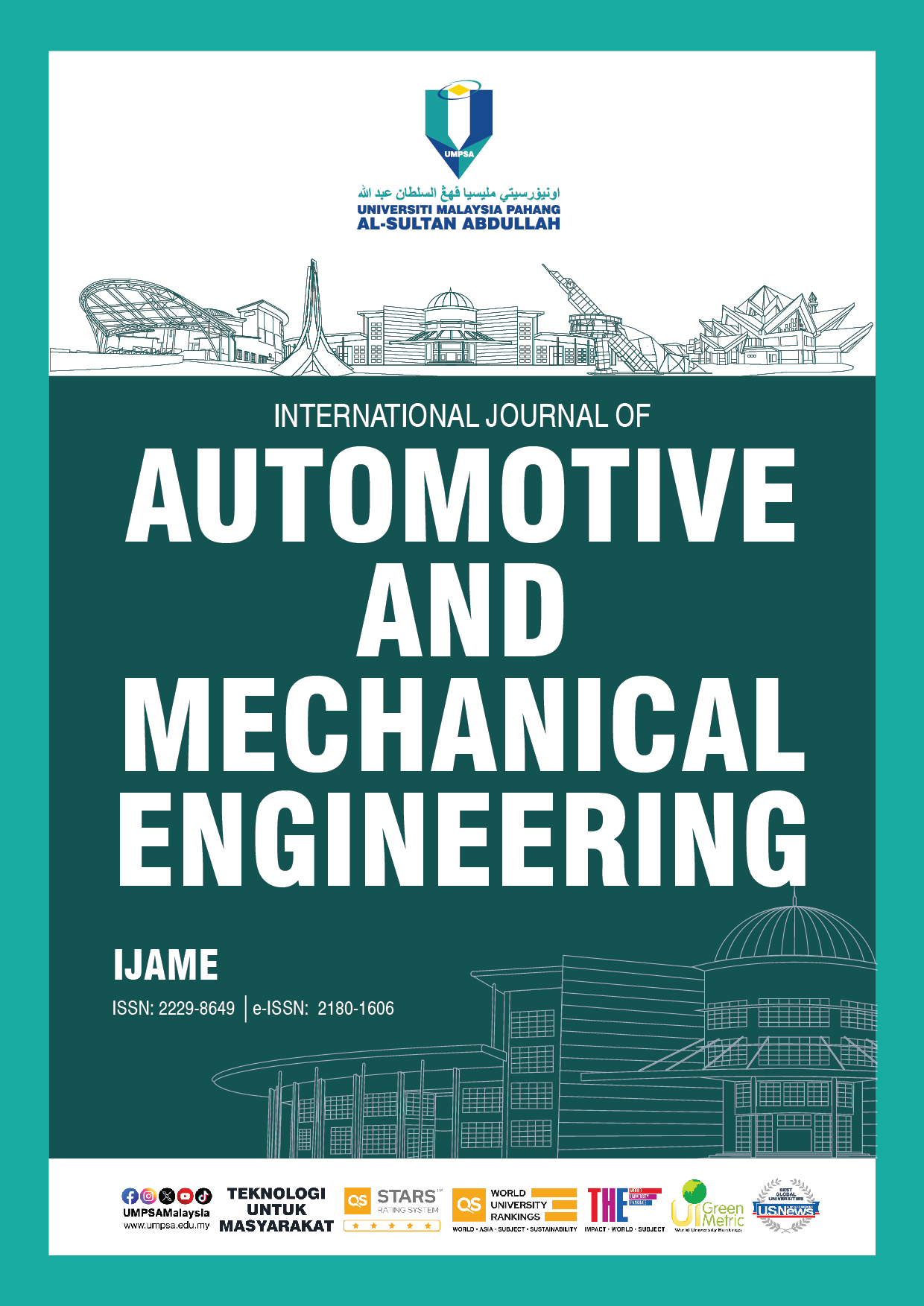Tensile Properties of Isotropic and Anisotropic Magnetorheological Elastomer With and Without Magnetic Field Application
DOI:
https://doi.org/10.15282/ijame.21.1.2024.07.0853Keywords:
Anisotropic, Isotropic, Magnetorheological, Mold, Magnetic field application, Tensile testingAbstract
In this study, two variations of magnetorheological elastomer (MRE) tensile specimens were fabricated, differing in their isotropic and anisotropic configurations. The isotropic MRE exhibited randomly dispersed carbonyl iron particle (CIP), whereas the anisotropic featured longitudinally aligned CIP particles along the gauge length of the tensile sample. The formation of the anisotropic MRE involved utilizing an electromagnetic curing chamber, which facilitated the alignment of CIP particles during the elastomer curing process. A mold was specifically designed to produce samples conforming to the dimensions outlined in ASTMD412-F. Subsequently, a Finite Element Method Magnetics (FEMM) analysis was conducted to examine the magnetic flux within the curing device for the anisotropic MRE. Uniaxial tensile tests were conducted on both MRE types, both in the absence and presence of a 30 mT magnetic field applied transversely to the direction of CIP alignment. Results indicated that without a magnetic field, the anisotropic sample exhibited a slightly higher tensile strength, lower elongation, and higher modulus at 100% strain. However, when a magnetic field was introduced, the isotropic sample demonstrated a more pronounced increase in tensile strength, showing an 18.4% improvement compared to the 5.6% increase observed in the anisotropic sample. Similar trends were observed in the reduction of elongation, with a 14% decrease for isotropic and a 7% decrease for anisotropic samples. Additionally, the data on modulus at a 100% strain revealed a 22.3% increase in stiffness for the isotropic sample, while the anisotropic sample showed a 10.6% increase.
Downloads
Published
Issue
Section
License
Copyright (c) 2024 The Author(s)

This work is licensed under a Creative Commons Attribution-NonCommercial 4.0 International License.







